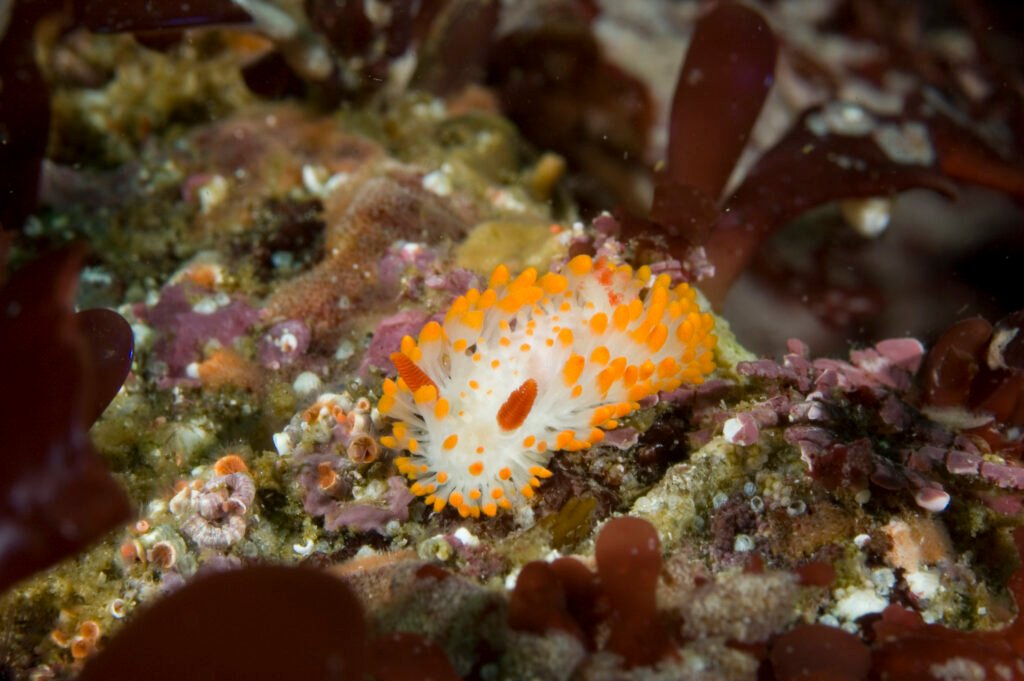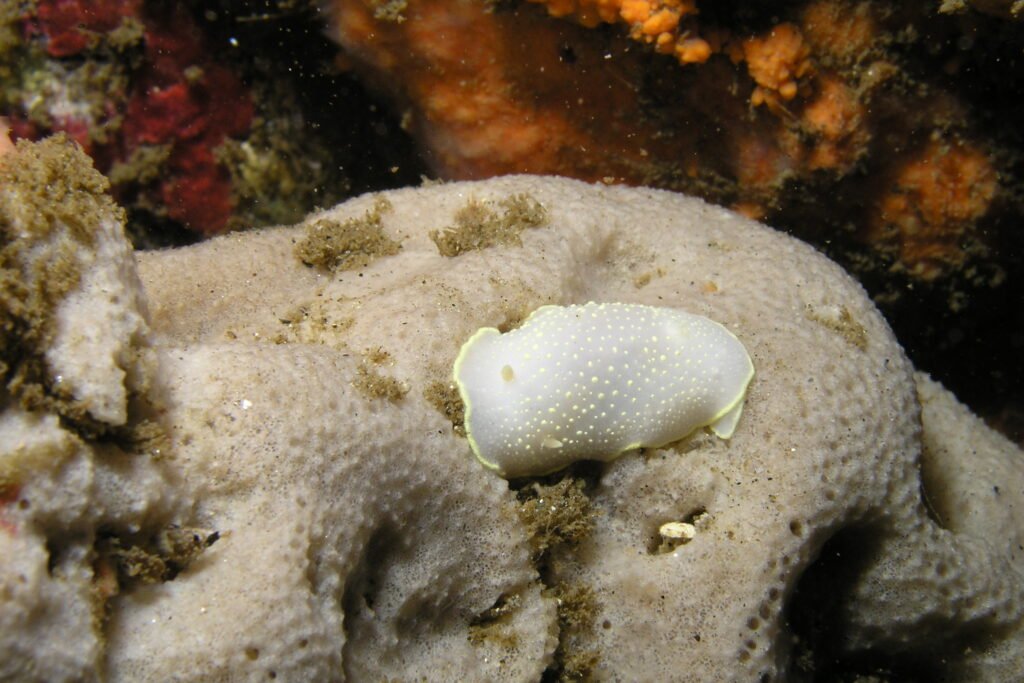Physical Description
The Sea Clown, Triopha catalina, is an elongate dorid sea slug, measuring approximately 40 mm in length. It features a semi-circular oral veil adorned with short branched tentacles. Its body is translucent white with orange-tipped tubercles, and it possesses distinct red-orange rhinophores.
Habitat and Geographical Range
Moderately common along the eastern Pacific coast, the Sea Clown can be found on rocks within kelp forests, as well as in tide pools and on wharf pilings. It prefers habitats with erect bryozoan colonies, which serve as its primary food source.
What They Eat and How They Breed
Sea Clowns feed on erect bryozoan colonies found in their habitat. During breeding, they typically lay eggs in gelatinous masses on suitable substrates, where fertilization occurs externally. The larvae hatch and undergo planktonic development before settling onto suitable surfaces.












